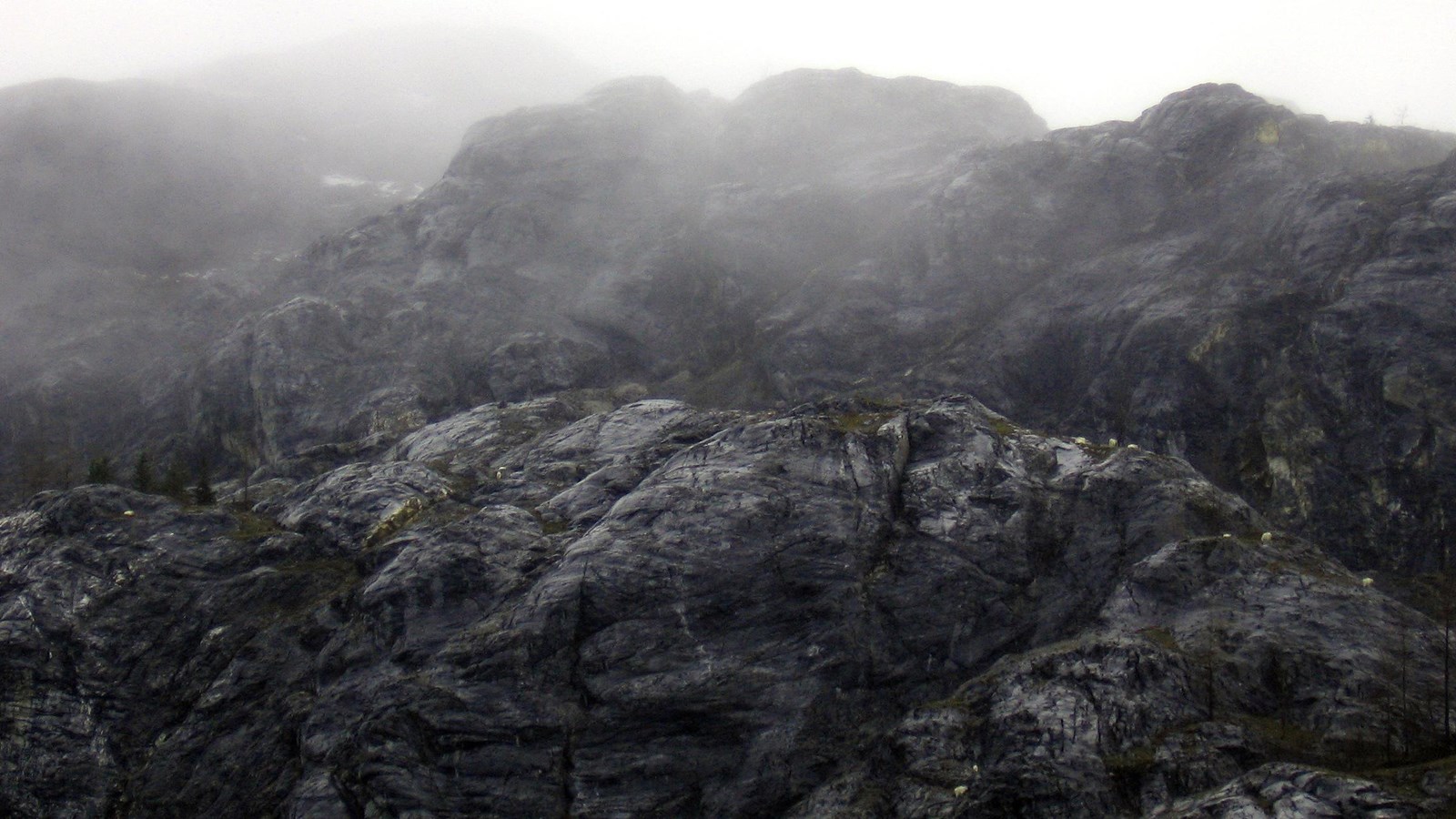Last updated: April 1, 2021
Place
Gloomy Knob

NPS Photo
Just north of Tidal Inlet, Gloomy Knob exemplifies the many dynamic interactions of rock and water, and the subsequent impacts on life.
The rock of Gloomy Knob shows clues to the geologic and biologic history of Glacier Bay.
Gloomy Knob is remarkably barren of vegetation compared to the surrounding landscape. The rock type - slightly metamorphosed limestone with high concentrations of dolomite - inhibits vegetation growth. With limited vegetation, we an see the clues to Gloomy Knobs geologic past. Long, grey, wavy, layered lines indicate that this rock formed underwater. In fact, fossil remnants indicate that this rock formed on the ocean floor in the tropical equator! Through plate tectonic action, the rock journeys northwest, smashed into the north American continent, and was pushed above sea level. Other stripes indicate another geologic event - the gouges, grooves and scratches, called striations, are evidence of glaciers flowing over Gloomy Knob and carving scratches in the rock like sandpaper scratching wood.
Flora and Fauna
The lack of vegetation reveals clues to Gloomy Knob's history, though there is enough to support an animal uniquely adapted to the rocky cliffs - mountain goats. Their flexible hooves and strong legs help them balance and leap along the cliff ledges. The glacially carved cliffs provide protection from their predators, bears and wolves. Nanny goats will have their kids in the early summer along protected cliff ledges, though by late summer mountain goats typically move to higher mountains for the alpine vegetation. The mountain goats are particularly vulnerable to climate change, since they rely on cool temperatures and accessible alpine vegetation. As temperatures warm, as the temperatures warm, plants become less nutritious and tree growth reduces alpine habitat. Yet, the cliffs of Gloomy Knob offer extraordinary habitat under the water too.
Underwater World
The steep vertical cliffs plunge underwater, creating habitat for a unique plant - cold-water coral. Imagine forests of coral fronds, over 2 meters tall, waving in the ocean current, catching the abundant plankton in these productive waters. The coral provides refuge for a wide variety of fish. The depth of this fjord - nearby the depth is 1300’ - combined with the dramatic ocean tides and the fresh-water melt from the glaciers creates a dynamic ocean environment that supports a diversity of life.
